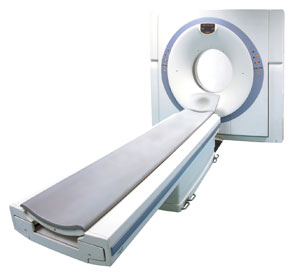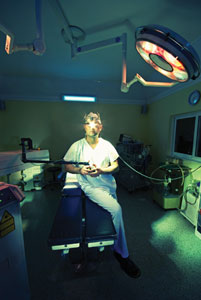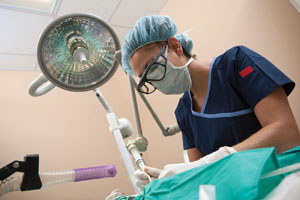The global medical equipment outsourcing
market is forecast to reach $40 billion by 2016 with a compound annual growth rate
of 16 percent, according to a report from GlobalData, based in London. Published
in January 2010, the report is titled Outsourcing in the Global Medical Equipment
Industry – The Market Expected to Register High Growth in the Future.
“The growth is mainly driven by major companies looking
to cut down costs and decentralize manufacturing capabilities, and the availability
of cheap and effective contract manufacturers in countries like India, China and
Malaysia,” said Ashwin Moduga, author of the report. The outsourcing market
in the medical device industry was valued at $14 billion globally in 2009, he added.
 Circumstances that are propelling the overall medical equipment
market forward include an increased number of aging people, their desires to lead
active lifestyles, a rise in chronic health conditions, and increased private and
public spending, according to the report.
Circumstances that are propelling the overall medical equipment
market forward include an increased number of aging people, their desires to lead
active lifestyles, a rise in chronic health conditions, and increased private and
public spending, according to the report.
The report defines outsourcing as subcontracting that involves
the transfer of a service, such as product design, research and development, or
manufacturing to a third party. It notes that contract research organizations undertake
device discovery and preclinical or clinical research-related activities on behalf
of companies, while contract manufacturing companies offer services ranging from
low-volume production for preclinical R&D to higher-volume fabrication for clinical
trials and commercialization, according to the report.
Photonic outsourcing
“Photonic devices that typically benefit from outsourcing
arrangements include light- and energy-based models used in aesthetic surgery and
treatments. A significant percentage of outsourcing in photonic medical devices
occurs in this segment,” said Moduga, who regularly tracks the medical device
pipeline landscape. Other photonic devices associated with outsourcing would include
optical sensors and retinal scanners that need many electronic components and whose
assembly is an important process in itself, he added.
“In 2009, the outsourcing market for photonics constituted
a significant 35 percent of the overall medical device manufacturing outsourcing.
Among the medical equipment markets, contract manufacturing is most significant
in segments such as diagnostic imaging and ophthalmology devices. The use of electronics
in CT scanners, coherence tomography systems, light- and energy-based devices for
diagnosis and therapy of the retina, and other such instrumentation is the key driver
for manufacturers to take up outsourcing,” Moduga said. Electronics has not
been a traditional medical device core capability.
“Traditionally, outsourcing was a method that allowed manufacturers
to devote valuable R&D time to core research in their area of expertise. Following
the economic recession, however, outsourcing has become a major cost-cutting tool,
especially in markets such as diagnostic imaging systems and ophthalmic devices.
Medical device manufacturers are relying heavily on the availability of specialized
contract manufacturing organizations that provide research, prototype testing and
manufacturing, while adhering to FDA and CE guidelines,” Moduga said.
Cost and capability
“From our perspective, mature products where the manufacturing
processes involved with the product are well-established typically benefit from
outsourcing arrangements, said Alexandre Fong, senior vice president of life sciences
and instrumentation at Gooch & Housego. He added that many components that evolved
from the telecommunications sector into biophotonics are a reflection of this. “There
are also some intermediate assembly processes where traditional labor-cost-driven
outsourcing adds value. I think the typical cost-driven outsourcing trend, as one
might expect, is more prevalent with mature biophotonics applications such as clinical
lasers or analytical equipment used in medical labs,” Fong said. He added
that even more of the outsourcing is present in the software, and the electronic
and mechanical components and subsystems that are required to support the biophotonics
platforms.
 “For relatively new areas such as biophotonic imaging, however,
outsourcing is typically driven by capability. This includes some growing clinical
applications (i.e., OCT), which we are involved in at the components level, as well
as spectral imaging, on which we work with end users at the systems level. The level
of expertise required to address the complex and sophisticated needs associated
with such technologies means that the work goes where it can be done best. This
labor cost factors less than, say, product performance and scrap rate,” he
added.
“For relatively new areas such as biophotonic imaging, however,
outsourcing is typically driven by capability. This includes some growing clinical
applications (i.e., OCT), which we are involved in at the components level, as well
as spectral imaging, on which we work with end users at the systems level. The level
of expertise required to address the complex and sophisticated needs associated
with such technologies means that the work goes where it can be done best. This
labor cost factors less than, say, product performance and scrap rate,” he
added.
“Of course, reduction of per-unit cost is the fundamental
basis for outsourcing, but it also has to do with strategy and risk mitigation.
Vertically integrated supply chains can be costly, and products are evolving at
a much faster rate than ever before. Investing in capability to meet every aspect
of a product’s development and production is no longer feasible given the
complexity of most biophotonics platforms,” Fong said.
Reducing cost
“Outsourcing is becoming a global phenomenon. Companies
recognize it as an important step in their value chain. The primary reason they
outsource is their desire to reduce operational costs,” Moduga explained.
“To reduce investment, medical equipment companies are searching for alternative
approaches or strategies to find innovative and successful ways to run their businesses.
It is expected that the average cost saved by the companies by outsourcing to contract
organizations can range between 10 to 15 percent, depending on the number of functions
or tasks outsourced,” he added.
“Also, outsourcing allows medical equipment companies to
take advantage of the process experience and expertise, as well as the supply chain
management of the third party. It enables them to decrease their fixed costs and
shift to a variable-cost model, which is beneficial in the long term. The elimination
of infrastructure investments is another cost-saving benefit of outsourcing,”
Moduga said.
Reducing time to market
“Developing a medical device is time-consuming – it
takes, on average, six or seven years to move a device from invention to regulatory
approval. In today’s competitive world, it is extremely important for companies
to be the first to enter a market,” Moduga said. “Companies are constantly
looking for ways to reduce the development phase. The complexity of the clinical
trials process and the stringency of regulatory requirements make it difficult for
them to reduce device development time. Outsourcing certain functions in the development
cycle allows the OEMs to save precious time,” Moduga said.
Risk-sharing agreements
“Outsourcing services traditionally involved a fee for the
service business models. However, outsourcing organizations are now entering into
risk-sharing agreements with medical equipment companies that approach them for
various development services,” Moduga explained. He added that such an agreement
means that the risk for the services outsourced is shared between the two businesses.
The agreements require the companies to provide milestone payments to the outsourcing
organizations. The amount of the payments depends on the results achieved. For example,
if a contract manufacturer achieves good results ahead of plan, it will receive
higher payments.
Concern for quality
“Issues of safety and regulatory compliance are among the
concerns involved with outsourcing. The costs of having good quality controls and
monitoring in place often offset the savings involved. This is particularly true
when it comes to medical devices. Intellectual property is always a concern when
outsourcing means off-shoring, and that adds another dimension to the management
challenge. Even so, the risk mitigation stands as an attractive basis for proceeding
with outsourcing,” Fong explained.
 “Although outsourcing brings economic advantages to the
medical equipment manufacturer, the increasing focus on developing new, innovative
equipment and the recent cases of clinical trial failures have led to a rise in
concerns over quality. When medical equipment companies outsource clinical trials
or other services to a contract organization, they are entrusting others with an
important aspect of their business – device design,” Moduga said.
“Although outsourcing brings economic advantages to the
medical equipment manufacturer, the increasing focus on developing new, innovative
equipment and the recent cases of clinical trial failures have led to a rise in
concerns over quality. When medical equipment companies outsource clinical trials
or other services to a contract organization, they are entrusting others with an
important aspect of their business – device design,” Moduga said.
“The manufacturing industry is raising questions over the
benefits gained by outsourcing to commercial service providers. The greater concerns
for the quality of activities carried out by contract organizations, especially
in the [economically] emerging countries, is likely to hinder the acceptance of
these organizations as strategic partners of medical device companies,” he
added.
Regions of interest
Outsourcing to Asia has been ongoing for the past quarter century.
With the increased competition in the US and Europe, medical device OEMs there have
turned to countries such as China and India, which offer lower-cost skilled labor.
Apart from these countries, which are considered major outsourcing destinations
for medical devices in the Asia-Pacific region, Malaysia, Singapore, Taiwan and
Thailand are also expected to see significant growth, Moduga said.
There are a number of reasons for outsourcing manufacturing to
Asia. Moduga noted that the salary of an Indian engineer is roughly one-tenth that
of a similar worker employed in developed countries such as the US. Also, he said
that many manufacturers in India and China are paying particular attention to manufacturing
standards, such as Good Manufacturing Practice (GMP) and International Organization
for Standardization (ISO) guidelines, thus increasing the quality of outsourcing.
“In order to provide a safe, yet low-cost, market for contract
research and manufacturing, Indian companies are becoming increasingly US FDA-compliant.
There are currently more than 100 FDA-approved medical device plants in India. These
numbers are increasing as Indian companies strive to attract more medically oriented
outsourcing contracts,” Moduga explained.
Fong noted that, for the well-established components that evolved
from telecom, Western firms typically outsource to Asian manufacturers in low-cost
labor markets like China. However, for many specialized materials and components,
it’s the other way around – systems tend to be integrated in the US,
Japan and Europe, he added.